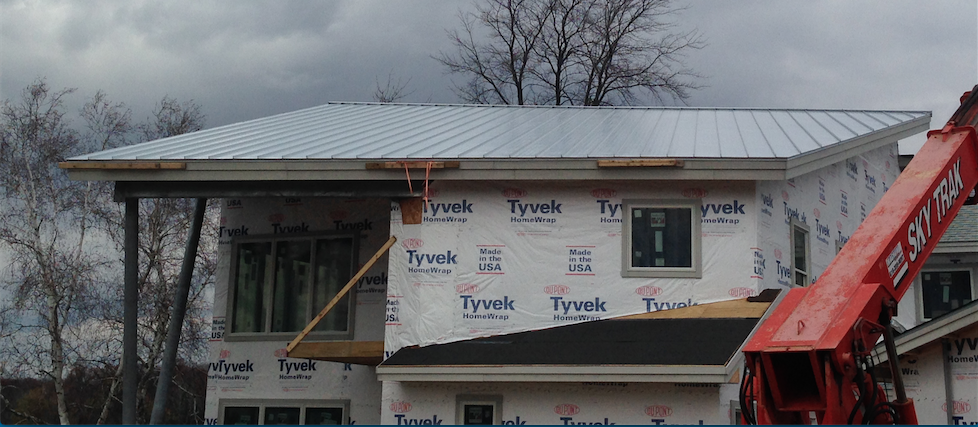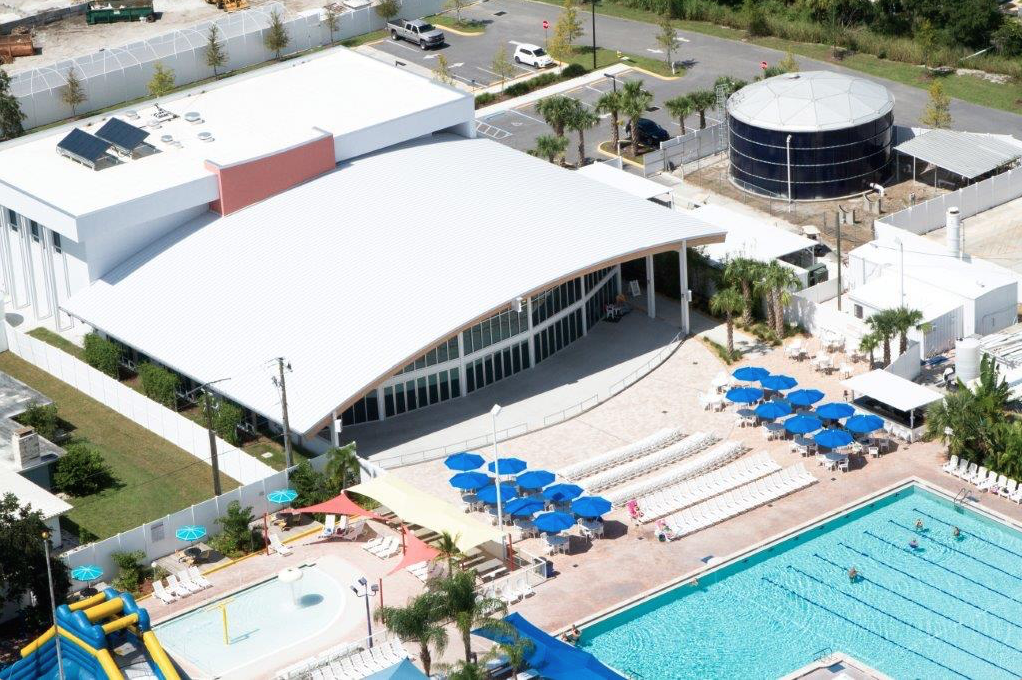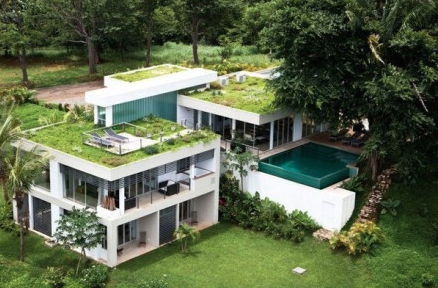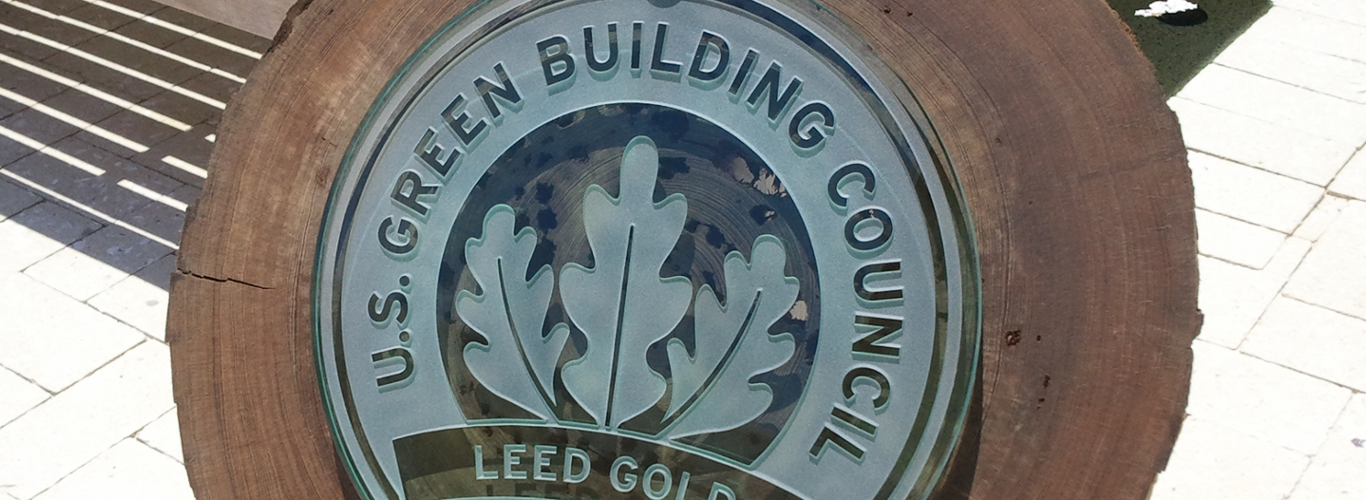6 DIRECT BENEFITS OF A GREEN ROOF:
How do you define a "green roof"?
A green roof can have one or more of the following characteristics, depending on the goals of your project.
- Long Lasting

- Heat Reflective
- Vegetative
- Habitat Creating
- Storm Water Management
- Proper Orientation
Before I continue, here are some related materials that will help you with your research on the benefits of green building:
- How Do I Make My Own Home Sustainable or Green?
- Why It's So Important To Make Your Home Sustainable?
- How To Schedule A Consultation With A LEED Accredited Professional?
MORE ABOUT THE BENEFITS OF A GREEN ROOF:
A roof that is long lasting provides the best value (ROI) over a roof’s lifetime. A long lasting roof is a roof that does not need to be manufactured, shipped and installed, then removed and taken to the landfill, and then manufactured, shipped and installed, then removed and taken to the landfill, over and over again. Beside the cost of transportation, labor and material each time, the embodied energy of the entire process takes an environmental toll beyond the individual building the roof is protecting. It is a linear process that begins with extracting raw material and ends in a landfill. It is less sustainable. A good example is shingles vs. metal roofing. If metal cost twice as much as shingles, but last 3-4 times as long, the metal roof is the less expensive roof option. Metal roofing can be made from recycled content, and the metal can be recycled at the end of its roofing life to become something else. Shingles cannot.
 A second advantage is reflecting heat. The roof should be able to reflect heat verses absorbing it. Absorbed heat gets conducted into the building, increasing the buildings energy use, and also radiates outward impacting the micro-climate of the site, the surrounding area, and even whole cities. Think about black asphalt parking lots- they do the same thing. LEED-NC v2009 recommends a Solar Reflectance Index (SRI) of 29 or greater for Steep slope roofs (greater than 2:12 pitch) and SRI of 78 for low sloped roof (less than or equal to 2:12 pitch). Refer to Sustainable Site Credit SS 7.2 for more information about the LEED requirements. High solar reflectance in roofing is typically a light colored roof such as white, off white, light beige, or light gray. There are also coating manufactures who are making darker colors that have a high SRI value. Our HGTV Green home has a metal roof on it that is a terra cotta color, but still has a SRI that would meet the LEED-NC criteria.
A second advantage is reflecting heat. The roof should be able to reflect heat verses absorbing it. Absorbed heat gets conducted into the building, increasing the buildings energy use, and also radiates outward impacting the micro-climate of the site, the surrounding area, and even whole cities. Think about black asphalt parking lots- they do the same thing. LEED-NC v2009 recommends a Solar Reflectance Index (SRI) of 29 or greater for Steep slope roofs (greater than 2:12 pitch) and SRI of 78 for low sloped roof (less than or equal to 2:12 pitch). Refer to Sustainable Site Credit SS 7.2 for more information about the LEED requirements. High solar reflectance in roofing is typically a light colored roof such as white, off white, light beige, or light gray. There are also coating manufactures who are making darker colors that have a high SRI value. Our HGTV Green home has a metal roof on it that is a terra cotta color, but still has a SRI that would meet the LEED-NC criteria.
A vegetative roof (sometime called a “green roof”) has many benefits. It is long lasting and can have a life expectancy that is almost unlimited. It can reduce the heat island effect of roofs by not absorbing the heat from the sun. It adds a layer of insulation that make your building more energy efficient. A vegetative roof with thoughtful native plantings may provide habitat for any number of local species. It can help your project with storm water management as it can collect rainfall and slow the run off and discharge of rain water from the site. Check out this Green Roof Handbook to help even further.
Vegetative roofs are not new technology. In fact, they are the oldest roofing technology. One should work closely with an architect, structural engineer and a landscape architect to design a superior green roof. They are not as heavy as you would think. Their “soil” is not like the soil of natural earth. Picking the proper planting for the climate of the project is very important. Get an expert involved.
CONCLUSION:
Proper orientation is a critical factor for any type of green roof. This is a design characteristic  that is free, but must be integrated into the design from the beginning. All building should be design to take advantage of a southern facing roof orientation to allow for maximum efficiency in solar orientation for the placement of photo voltaic (PV) systems and solar hot water systems. LEED for Homes recommends the roof be facing within 15 degrees of facing due south. (So the EAST/WEST axis of the building is with 15 degrees of EAST/WEST). Whether or not you plan to install photo voltaic (PV) systems and solar hot water systems during construction or not, one should always set up the building to have those systems installed in the future. All buildings will be retrofitted for onsite energy generation in our children’s lifetime.
that is free, but must be integrated into the design from the beginning. All building should be design to take advantage of a southern facing roof orientation to allow for maximum efficiency in solar orientation for the placement of photo voltaic (PV) systems and solar hot water systems. LEED for Homes recommends the roof be facing within 15 degrees of facing due south. (So the EAST/WEST axis of the building is with 15 degrees of EAST/WEST). Whether or not you plan to install photo voltaic (PV) systems and solar hot water systems during construction or not, one should always set up the building to have those systems installed in the future. All buildings will be retrofitted for onsite energy generation in our children’s lifetime.
Remember to use the button below to speak with a certified expert and get all of your questions answered:



